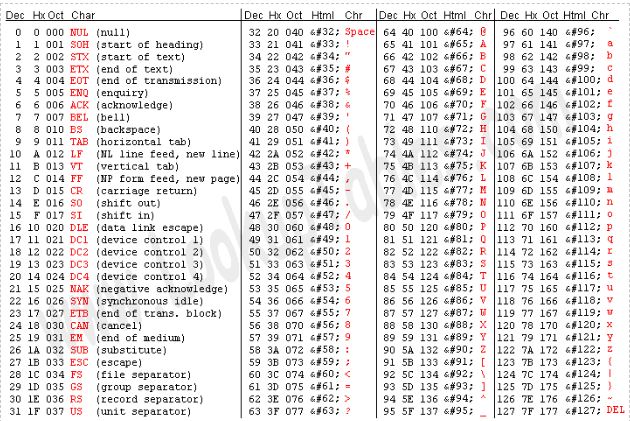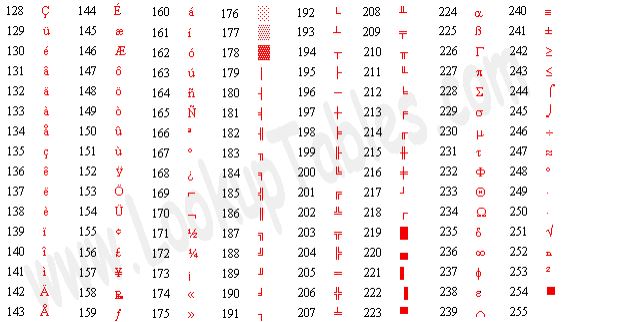ASCII Values Table in C
For Complete YouTube Video: Click Here
In this class, we will discuss on ASCII Values Table in C.
In our previous discussion on data types, we have discussed the definition of character variables.
The image below is the definition of a character variable.

Whenever we define a character variable, each character will have a unique code, which will get stored in the memory.
Those unique codes are called ASCII Codes.
ASCII Values Table in C
ASCII Stands for American Standard Code for Information Interchange.
The earlier C Compilers are 7-bit ASCII Codes. With seven bits, we have 128 unique codes.
Later the American standards had extended ASCII Value codes to 8-bits. Now the total ASCII codes are 256, numbered from 0 to 255.
The images below are the tables for 7-bit and the extended 8-bit ASCII codes of the characters.
Whenever we define a character variable, each character will have a unique code, which will get stored in the memory.
Those unique codes are called ASCII Codes.
ASCII Values Table in C
ASCII Stands for American Standard Code for Information Interchange.
The earlier C Compilers are 7-bit ASCII Codes. With seven bits, we have 128 unique codes.
Later the American standards had extended ASCII Value codes to 8-bits. Now the total ASCII codes are 256, numbered from 0 to 255.
The images below are the tables for 7-bit and the extended 8-bit ASCII codes of the characters.


Char ch = ‘A’; the above definition states that “ch” is a character variable storing uppercase alphabet A.
In the above ASCII code table, the uppercase A is assigned a code of 65. The binary equivalent of the uppercase A is 1000001.
Now, this 8-bit code will be stored in the memory.
